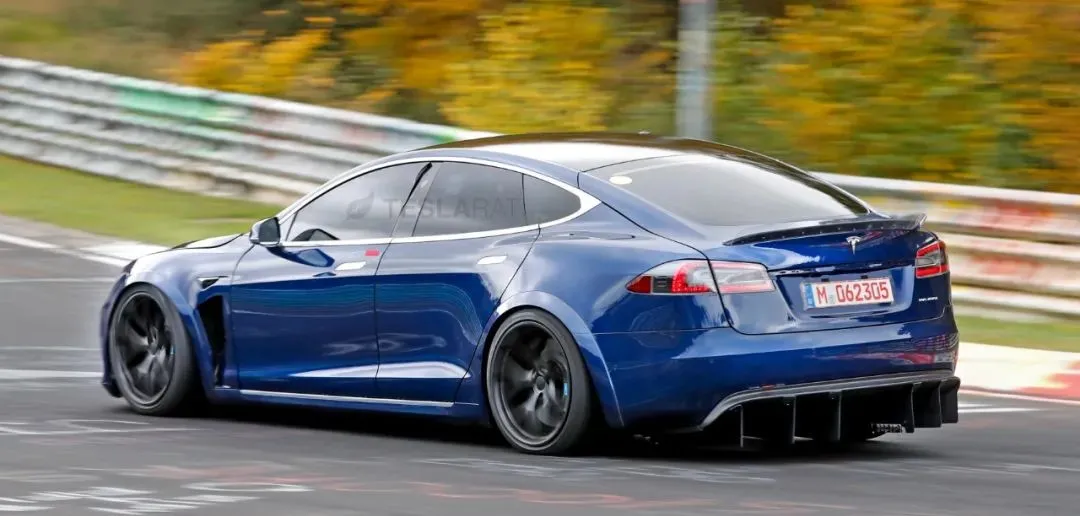Author: Chris Zheng
On June 22, 2012, Tesla delivered the world’s first smart electric car, Model S. After 8 years, on August 11, 2020, Elon Musk hinted that the new generation of Tesla Model S, code-named Plaid, was finally coming.
Here is a summary of the Plaid powertrain’s related information for Model S, compiled from foreign media, Tesla CEO Elon Musk’s Twitter account, and Tesla’s earnings conference minutes, etc. Enjoy it.
Plaid Powertrain
Upgrading Model S/X’s power is a “long-planned” plan by Elon Musk.
On April 7, 2016, just one week after the release of Model 3, Elon tweeted: “The only thing beyondludicrous is plaid.”
Ludicrous and Plaid are two acceleration modes of a spaceship in the science fiction movie “Spaceballs” from 1987. When the spaceship starts Ludicrous mode, the scene in the movie is like this:

In October 2016, Tesla Model S P100D accelerated from zero to 100 km/h within 2.5 seconds under a new mode. To pay tribute to “Spaceballs,” Tesla named this mode Ludicrous mode, and the Tesla central control screen after starting the mode is like this:

In the movie, Plaid mode is faster than Ludicrous mode. On the other hand, Tesla has announced that the new Roadster’s acceleration from 0 to 100 km/h is 2.1 seconds.
This means that the new Model S Plaid’s acceleration from 0 to 100 km/h will be between 2.1 seconds and 2.5 seconds. In the tiny space of 0.4 seconds, it has to be said that Elon Musk’s knife skills are as delicate as his good friend, NVIDIA CEO Jen-Hsun Huang 🙂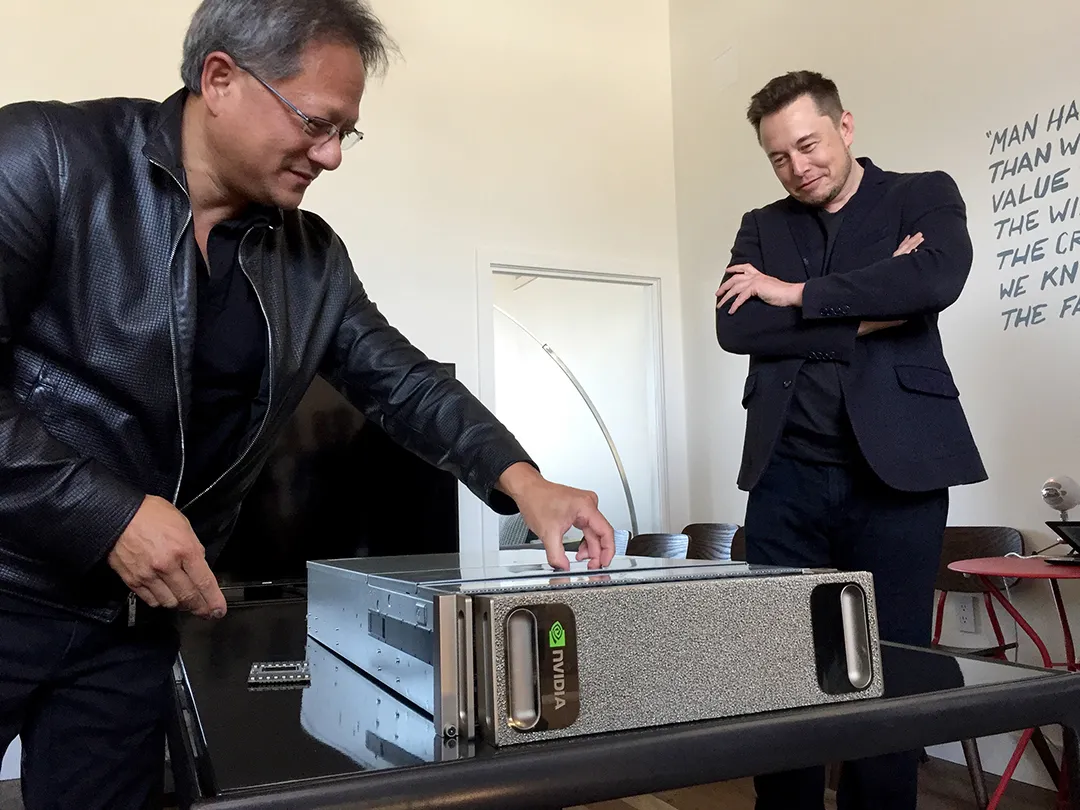
Prior to this, Tesla had produced three generations and five types of high-performance motors. Except for the front induction motors on Model 3, all the others were 200 kW high-performance motors.
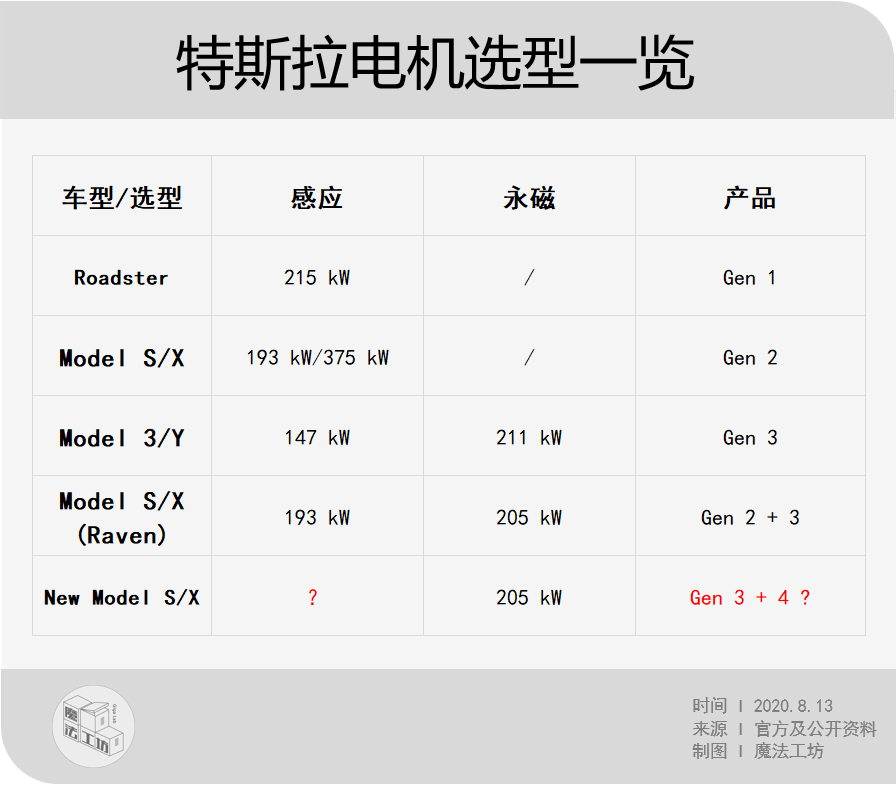
In 2017, Tesla’s self-developed third-generation motor was put into mass production and installed on Model 3. Its powerful performance and low energy consumption surpassed the second generation motor on Model S/X.
Therefore, in 2019, Tesla made a minor revision to Model S/X, changing the front motor from the second-generation induction motor to the third-generation permanent magnet motor used on Model 3.
In September 2019, Elon confirmed on Twitter that the all-new Model S/X will be equipped with a three-motor powertrain. Considering that the third-generation motor achieved mass production in 2017, Tesla will probably develop the fourth-generation motor for the new Model S/X.
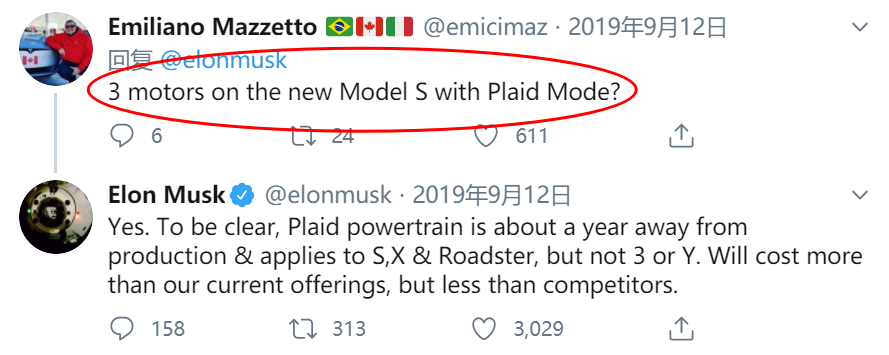
One possible combination is that the front motor of the new Model S/X will continue to use the third-generation permanent magnet motor, while the rear dual motors will be equipped with fourth-generation high-performance motors.
Prior to Tesla, Audi e-tron S had already released a three-motor powertrain. The main significance of the three motors is in the electric control torque vector distribution, which can bring better handling performance.
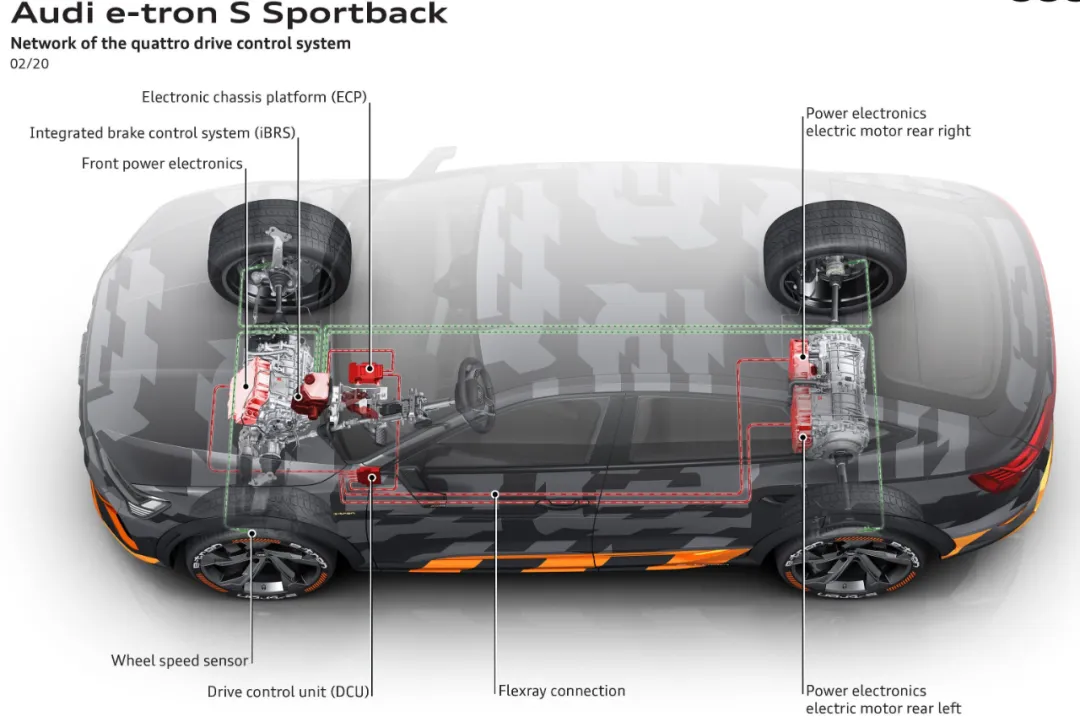
(Interestingly, the e-tron S has only been “released” and has not yet been “mass-produced”. We do not know whether the world’s first mass-produced three-motor car will belong to Audi or Tesla.)
The significance of the three-motor design for Tesla lies in handling performance. It is well known that the handling performance of the first-generation Model S/X does not match their price. Starting with Model 3, Tesla began to focus on the handling performance and driving feel of its vehicles.
In 2019, Elon Musk personally directed the battle between the Model S Plaid and Porsche Taycan at the Nürburgring.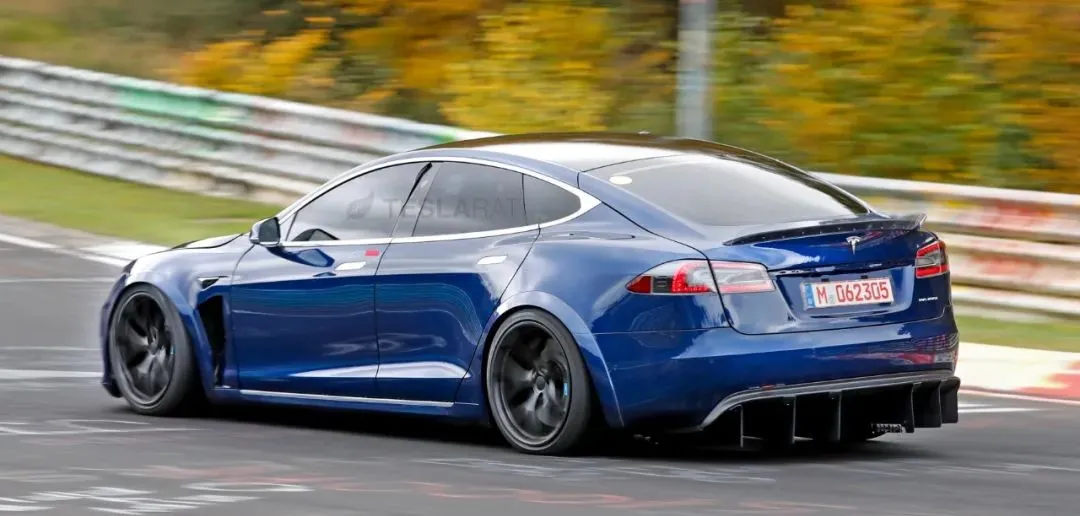
Tesla’s intention is clear: to catch up with traditional brands in the area of handling performance, areas where traditional brands excel, and to remove the labels of “king of straight” and “electric cars are only for the stupid and the fast”. Tesla’s goal is to have the new Model S beat the Porsche Taycan’s lap time in the Nürburgring.
Perhaps more important than the triple motor is the battery developed independently by Tesla.
Previous internal Tesla documents showed that Elon requested to showcase the Model S equipped with the new battery during the Battery Day originally scheduled for April this year. However, the COVID-19 pandemic has delayed Tesla’s Battery Day and shareholder meeting until September.
Currently, Tesla’s self-developed battery factory is in full swing of renovation, with the goal of putting a self-developed battery production line into operation before Battery Day in September.
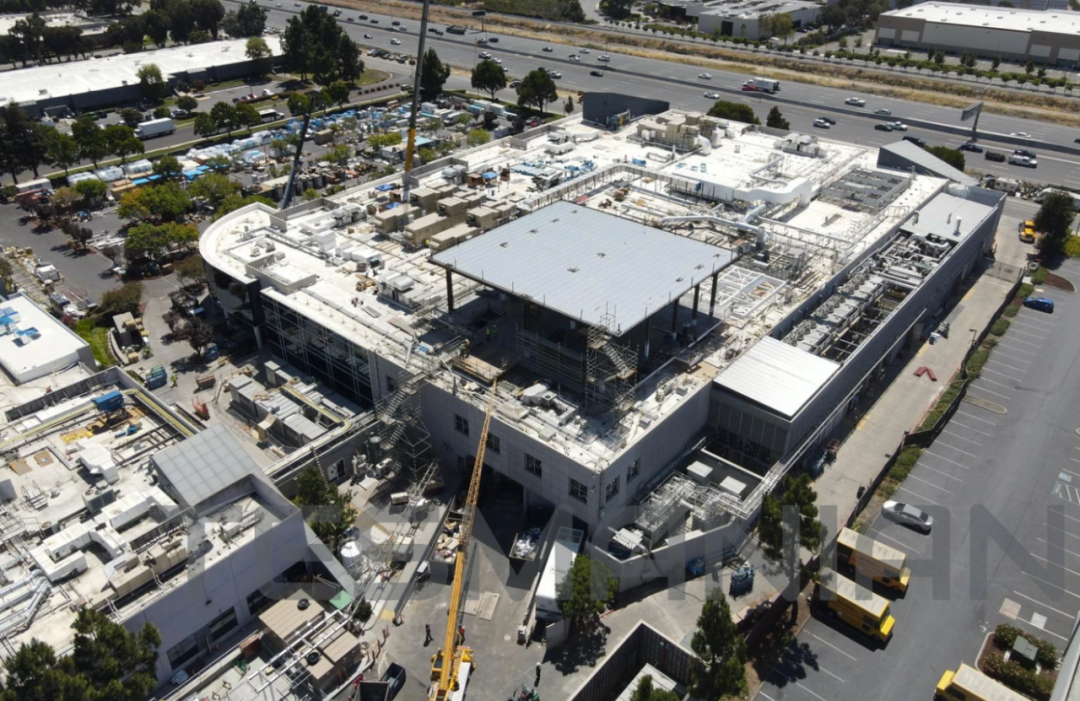
From the perspective of supply and demand, the market size of Model S/X is only 100,000 vehicles per year, much lower than other product lines of Tesla, and the production capacity of a single production line is also far from sufficient to meet the demand for large quantities of products.
From the perspective of product positioning, Tesla’s self-produced batteries have the opportunity to achieve a 10% increase in energy density, increasing the energy density of battery cells to around 295 Wh/kg.
In addition, the new battery’s pole ear design is expected to greatly reduce the internal resistance of the battery and reduce the amount of heat generated during high-power charging and discharging. When combined with the new generation of thermal management systems on the Model 3, the new Model S/X will have a more sustainable performance during 250 kW supercharging and on the racetrack.
However, in terms of range, Elon has stated that the Plaid model will not have a significant increase in range. Considering the current Model S has a range of about 650 km under EPA conditions, it can be expected that the new Model S range will be between 700 and 750 km.

Overall, the higher positioning of the Model S/X allows the Plaid powertrain to bring together Tesla’s cutting-edge technology in the three-electric motor engineering field, thus re-establishing differentiation from the Model 3/Y and establishing itself as a high-end product.
Styling? Interior? Air Vent Outlet!During Christmas 2015, Tesla’s design studio did not take a holiday break. Chief Designer Franz Von Holzhausen led the interior design team to finalize Elon’s design of “no visible air vents” for the Model 3.
By using six small motors and clever application of the Coandă effect, “no visible air vents” were achieved. Some consumers saw this as a lazy and crude “unfinished” design, but for Tesla, it was a big victory for the “less is more” minimalist approach.
Regardless of the public’s interpretation, Elon was very fond of this design. The first step in the Model S/X interior redesign was to follow the Model 3’s lead and eliminate visible air vents.
The second major controversy of the Model 3 was the complete removal of the dashboard.
The new Model S will still retain a dashboard, but it will continue to be weakened by integrating it into a small screen that will blend into the front panel.
Tesla’s design philosophy is “geared toward autonomy,” which suggests that in the era of autonomous driving, a driver-oriented dashboard configuration is clearly an unnecessary presence.
Specific implementation can be seen with the dashboard design of the Tesla Roadster.
The infotainment center screen will also follow the Model 3 and update to a 17-inch horizontal screen. However, the difference between the new Model S/X and the Model 3 is that the former will have some borderless design to achieve better visual effects. Due to car regulations, a completely borderless infotainment center screen cannot be implemented, but design techniques can be employed to visually mitigate the presence of the black borders.
In fact, Tesla has applied for a patent for the borderless design, and it is attributed to Christos Gougoussis, a senior engineer with Tesla’s Manufacturing and Innovation Group.The latest update on Tesla is nothing short of impressive. Based on customer feedback, Tesla has decided to improve the material quality and comfort of seats, and add a series of luxury features to its new Model S/X, positioning itself to compete with other luxury brands.
When it comes to the consumer market, Tesla has always had a unique advantage in design, intelligence, and electrification capabilities. Now, with the industry’s transition to intelligent and electric mobility, Tesla has surprisingly focused on traditional “luxury” features such as handling performance and material quality, which may pose a threat to traditional luxury brands.
The latest Tesla design documents show that the new Model S/X will improve interior space utilization and reduce vehicle size, meaning that the Model S, originally positioned between the BMW 5 series and 7 series, will now be targeting the C-class luxury market dominated by the BMW 5 series, Audi A6, and Mercedes E-class.
Now, let’s talk about the Electronic and Electrical Architecture (EEA). From the consumer’s standpoint, EEA changes are not as obvious as changes in style, interior, and power. However, this does not mean that EEA is unimportant.
If the design and interior are the body of a smart car, the EEA is the network of nerves that runs throughout it. For Tesla, the EEA holds another meaning. The electronic and electrical architecture of the Tesla Model 3 is the most advanced in the automotive industry, far ahead of major multinational car companies.
In early 2018, a German luxury brand (B?B?A?) imported and reverse-engineered a Tesla Model 3, paying $230,000 for it. The final conclusion of their engineers was that the EEA had made the most profound impression: it was compact, expandable, fully integrated, modular, easily accessible, well-protected, reasonably priced, and ingeniously crafted in many details. Minimalism infused the entire vehicle.Testers were especially impressed by the power electronics. Compact, expandable, fully integrated, modular, easily accessible, well-protected, reasonably priced, and astonishingly clever in many details. This minimalism runs through the entire vehicle.
Following that, Japanese competitors also disassembled the Model 3. In early 2020, Nikkei BP disassembled the Tesla Model 3, quoting automotive industry insiders’ explanations: “It is generally believed in the industry that the commercial application of centralized electronic architecture centered on the central processing unit will not be available until after 2025. However, Tesla’s HW 3.0, launched in April 2019, is an important part of its electronic and electrical architecture’s three major domains.”
Based on this, Nikkei believes that Tesla leads other companies by six years in terms of electronic and electrical architecture.
However, with a little judgment, one can see that this logic is flawed. While HW 3.0 is indeed an important part of Model 3’s electronic and electrical architecture, the architecture itself did not become advanced because of HW 3.0’s mass production (which is a bit convoluted).
The Model 3 has been controlled by the three major domain controllers: the CCM (Central Computing Module), BCM LH (Left Body Control Module), and BCM RH (Right Body Control Module) since its volume production in 2017.
If “the commercial application of centralized electronic architecture centered on the central processing unit will not be available until after 2025” is the industry consensus, then Tesla leads other companies by more than eight years in terms of electronic and electrical architecture.
On the other hand, many changes have been happening in the automotive industry since the Model 3 went into production three years ago: major companies such as Toyota, General Motors, Volvo, and BMW are accelerating their original electronic and electrical architecture roadmaps, and the most radical among them, Volkswagen Group, is approaching Model 3’s electronic and electrical architecture with its first smart electric car, the ID.3. However, this car’s intelligent operating system is also facing some challenges due to its radical approach.One-sentence summary: Intelligence is a comprehensive ability that includes hardware architecture, underlying operating systems, and upper-level algorithms, and it is currently Tesla’s most solid competitive strength.
So, will the new Model S/X come with Tesla’s next-generation electronic and electrical architecture?
That depends on how high the position of Model S/X is in Tesla’s product line.
At the Q3 2019 earnings conference, Elon explained his views on Model S/X:
They are indeed “niche” products. What I mean is, they are very expensive and produced in small batches. Frankly, we continue to manufacture Model S/X mainly for emotional reasons. They have little importance for (Tesla’s) future.
The term “niche” refers to a very small and segmented product or service area. Elon’s intention to convey to Wall Street is clear: although both Model S/X are high-end products, they are no longer core products for Tesla.
Does this mean Tesla has no intention of throwing a large amount of R&D resources into upgrading Model S/X?
There seems to be a turning point.
The Plaid powertrain mentioned earlier will not only appear in the new Model S/X, but will also be used in the Roadster and Cybertruck (of course, there will be different configurations).
In fact, Tesla’s cost amortization on a large scale has already begun, such as the 120 kW fast charging internal of the V2 supercharger, which is the same OBC as 12 Model S; the third-generation motor mounted on the Model 3 will also appear on the Model S/X and the pure electric semi-trailer Semi.
Therefore, for Tesla, the Roadster project is attached to the new Model S/X project, and the new Model S/X project can be jointly amortized with the Cybertruck project to make the scale more reasonable.
In short, when a product is a “niche” product but has to be done for emotional reasons, as long as it helps find a core product to jointly develop with, the problem can be solved through 1+0.1=1.1.
Finally, let’s explain the title. Did Elon Musk imply the release of the new Model S?! Why is it a suggestion instead of an announcement, and is it true or not?
About two and a half years ago, Elon was forced to step down as the chairman of Tesla because he casually revealed operational details on Twitter and was fined $40 million by the US Securities and Exchange Commission (he and Tesla paid $20 million each).But how could rules possibly control such a live wire? Not long after receiving 20 million dollars, he publicly declared that he didn’t need to consult anyone at Tesla to make decisions.
Returning to Twitter, he started playing with some terrible puns and hiding from regulatory authorities. For example, he thought the Tesla stock price was too high and said “lol Stonks,” intentionally misspelling “Stocks.”
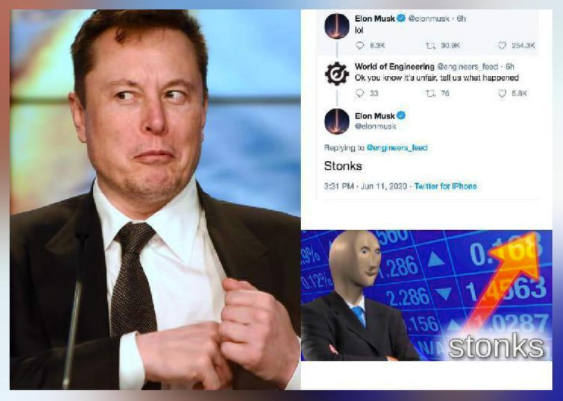
Regarding the release of the new Model S, codenamed Plaid, he posted a comedy still from WKRP in Cincinnati, featuring Herbert Ruggles Tarlek, Jr. wearing plaid clothing.
Then he commented, “I’ll be wearing these clothes soon,” and added, “It’s a set of clothes with plaid patterns from the shirt to the jacket.”
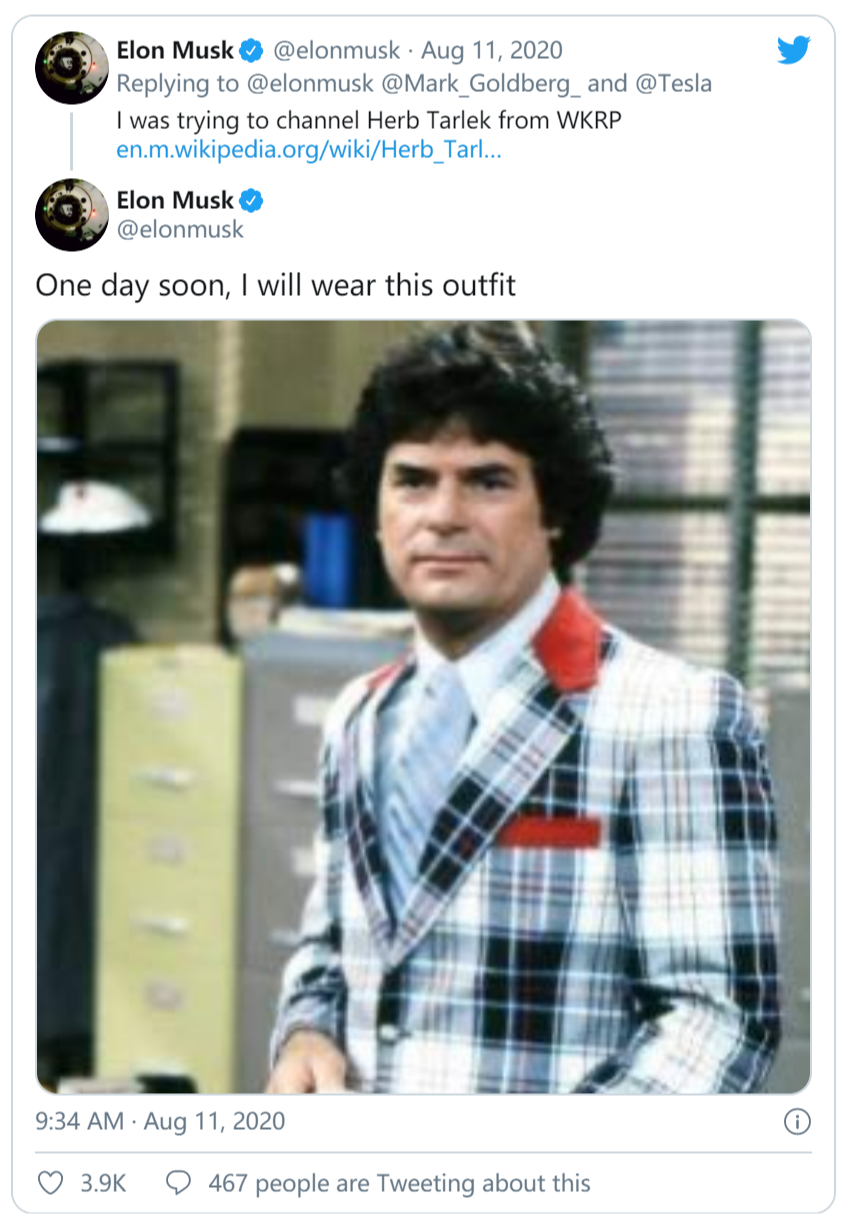
Combined with what he said before, the all-new Model S/X would be mass-produced in October/November 2020, and this unfunny joke is clearly a hint at the Model S launch event.
New products are eagerly anticipated, but this person is just too annoying.
This article is a translation by ChatGPT of a Chinese report from 42HOW. If you have any questions about it, please email bd@42how.com.
